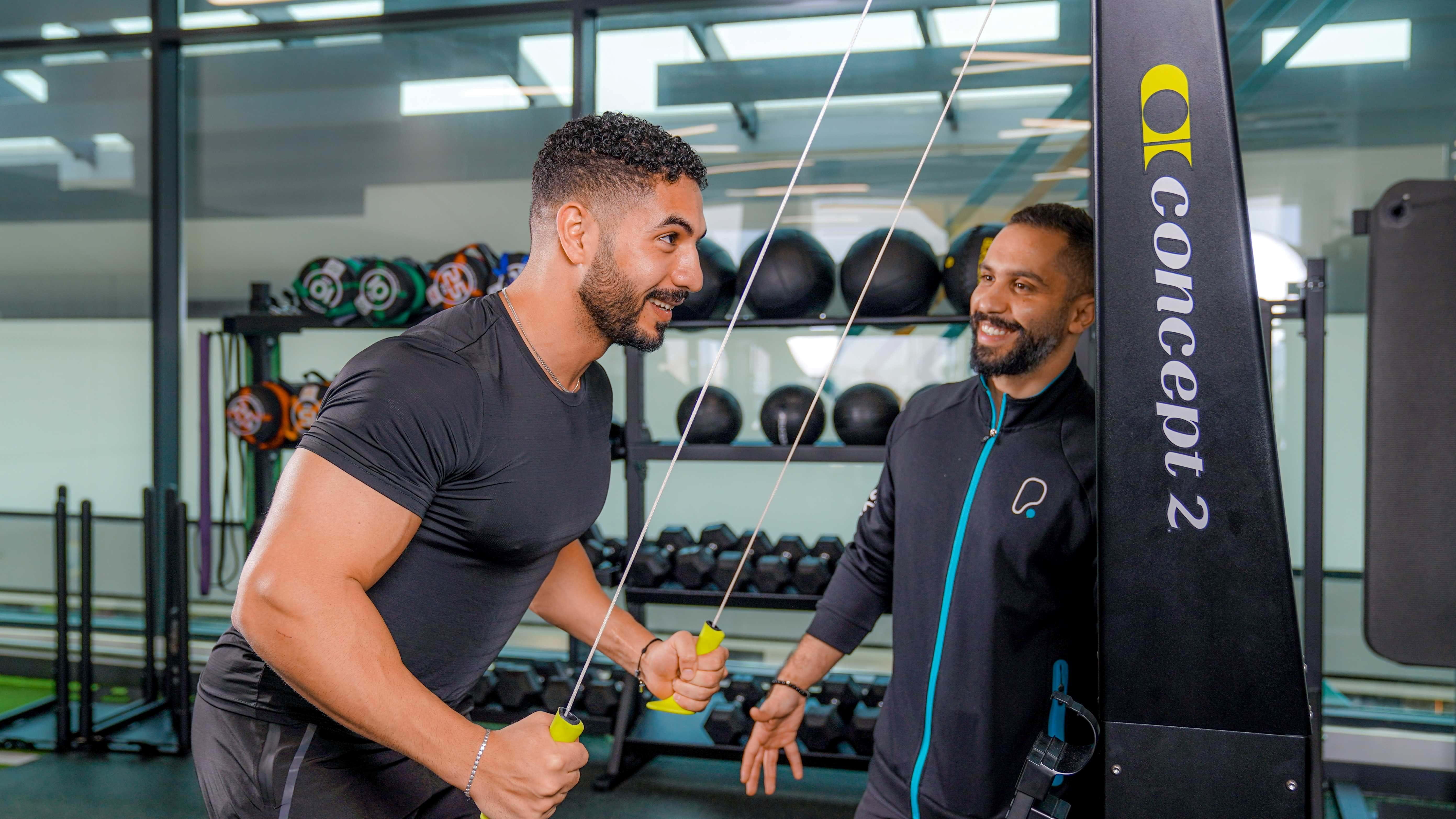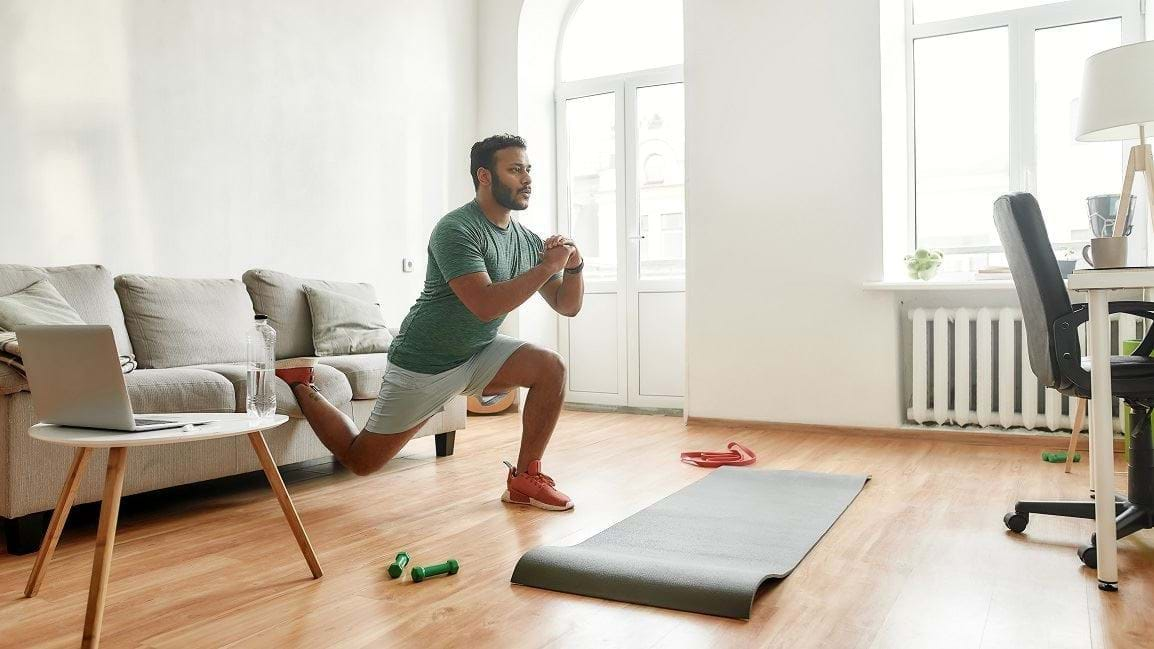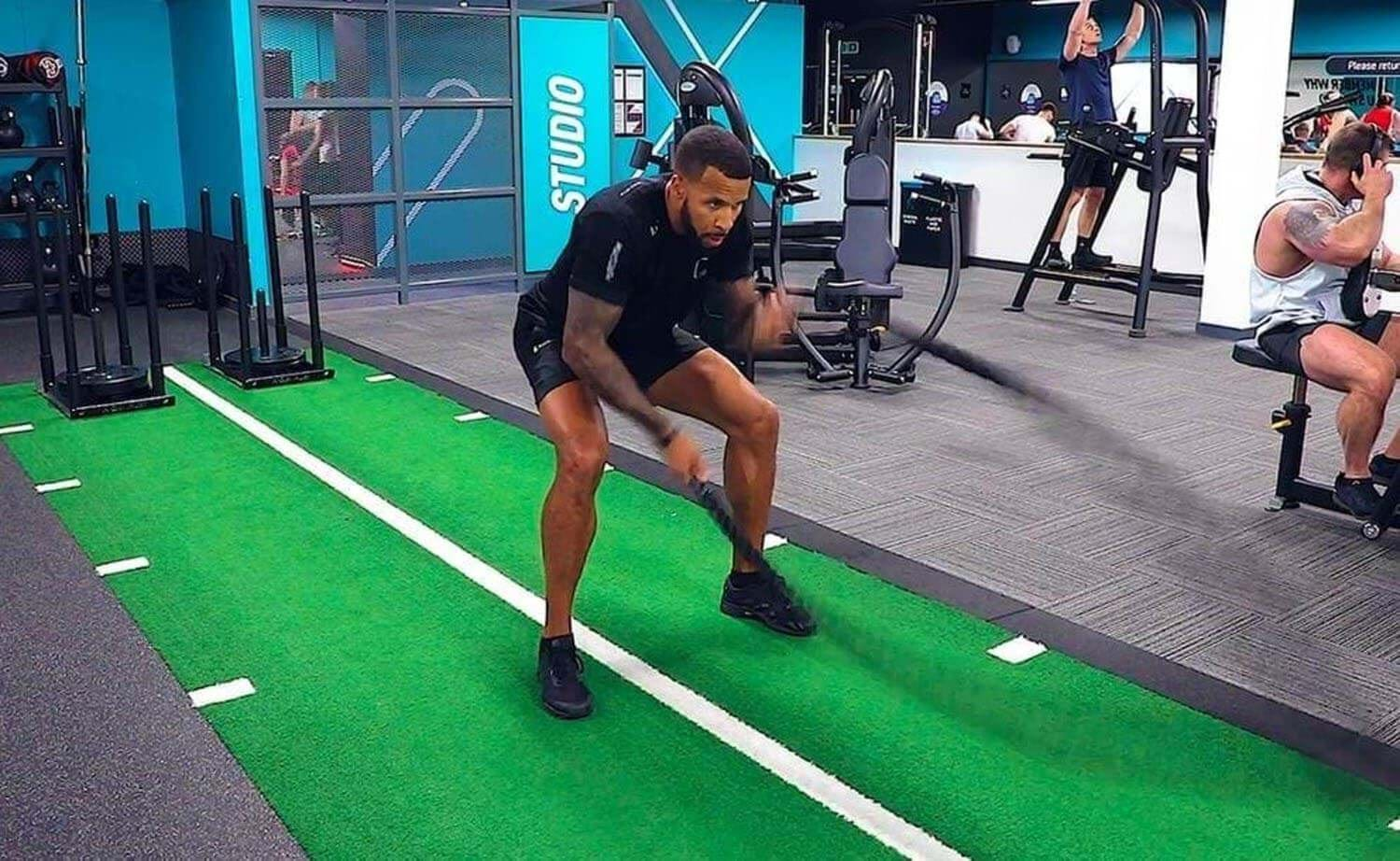The Best Gym Workout Plans For Beginners

If you're just getting started at the gym, it can feel challenging knowing what to do and how to shape your visits to the gym.
Creating a solid workout plan can be one of the best places to start when forming new exercise habits. Discover some of our top tips and advice for workout plans, or jump straight to our example beginners workout routines below.
WHY ARE WORKOUT PLANS SO USEFUL FOR BEGINNERS AT THE GYM?
Having a workout plan is beneficial for a few reasons. For beginners, knowing what you need to do each workout can make your gym session go a little smoother as you can simply turn up, follow your plan, and head home, rather than making it up as you go along. Plus you can research your exercises beforehand so you feel confident in how to perform them. This can help to ease any gymtimidation you may be experiencing and make your gym sessions more comfortable.
Having a workout plan is also one of the best ways to achieve your fitness goals, as it allows for consistency and progressive overload, which are key to improving your strength and endurance and building muscle.
A workout plan can also help beginners to avoid overtraining and undertraining, allow for progress to be tracked, and mean you make the most of your time at the gym.
WHAT SHOULD BEGINNERS CONSIDER WHEN CREATING A GYM WORKOUT PLAN?
Creating a workout plan for the gym can be a useful way for beginners to set specific fitness goals and stay motivated as you progress. Here are some steps that you can follow to create a workout plan:
1. Determine your fitness goals: What do you want to achieve through
your workouts? Do you want to build muscle, lose weight, or improve
your cardiovascular endurance? Having specific goals in mind will
help you to create a workout plan that's perfectly tailored to your
needs.
2. Choose exercises: Select exercises that will help you to work
towards your fitness goals. Consider choosing a mix of exercises
that target different muscle groups, including exercises for the
upper body, lower body, and core, and make sure to include a mix of
compound and isolation exercises.
3. Plan your workouts: Determine how many days per week you want to
work out, and schedule your workouts accordingly. Consider breaking
up your workouts into muscle groups or focusing on different goals
in each gym session, for example strength in one, cardio in another.
4. Set a schedule: Choose specific times of the day or week to complete
your workouts. Make sure to set aside enough time to complete your
workouts, and try to be consistent with your schedule.
5. Track your progress: Keep a record of your workouts, using either a
specific app, making notes on your phone or even writing on a good
old fashioned piece of paper. Make sure to include the exercises you
completed, the number of sets and reps, and the weights you used.
This will help you to see your progress over time and adjust your
workouts as needed.
Remember to start slowly and gradually increase the intensity of your workouts as you become more comfortable and confident in the gym. Consult with a personal trainer or fitness professional if you have any questions or concerns about creating a workout plan.
How often should you workout each week?
For beginners, we usually recommend starting out with three to four days at the gym per week max. While it might be tempting to go hard every single day, it's important to include rest days as these are when your body recovers and progress is made. This is especially true if you're new to exercise -- if you go too hard too fast, you're much less likely to stick with a routine.
Always warm up
It's vital to include 5 - 10 minutes of easy cardio or dynamic stretching for a warm up, as well as either 5 minutes of easy cardio to cool down or some mobility/stretching. This will help to prevent and even relieve post workout muscle soreness, as well as reduce the risk of strain or injury.
What to include in your exercise plan
A good, well rounded workout plan should include strength training, mobility work, and cardio. Strength training builds muscle, mobility and flexibility training improves how the body moves and feels and can assist strength training, while cardio is important for health and circulatory health.
The mix of these will likely change depending on your goals. If you want to lose weight, you may have more cardio sessions than someone who's sole goal is to build muscle.
There's nothing to say that strength, cardio, and mobility can't all be in the same sessions, but it can be helpful to split your workouts to focus on different workout types depending on how often you plan on working out.
The example plans provided here include:
- Full body workouts: Full body workouts are a great option if you are
fairly new to strength training. It allows all the major muscle
groups to be worked in as little as two sessions a week, allowing for
plenty of recovery, and means you can focus on the basic compound
movements like squats. Plus, when you're new to lifting you'll likely
experience newbie gains, which means you can see incredible progress
from basic full body routines. We explain more about the benefits of
full body training here.
- Cardio: Choose a style of cardio that you enjoy, or maybe mix it up
each time. Examples include running or brisk walking on the
treadmill, or using the stepper or cross trainer. You can also go to
cardio based fitness classes if you struggle staying motivated during
your cardio session.
- Mobility: This section of your plan will focus on stretches and
gentle movements like yoga or pilates poses. Perfect for improving
your strength, flexibility, and stability, these can use equipment
like resistance bands, weights, and balancing balls, but can also
easily be done without any of these.
Here are a couple of options for how to split your workouts, depending on whether you're planning to head to the gym three or four times each week.
Three days per week workout split plan:
If you only want to work out three days per week, we recommend spending an hour per session and completing strength training, cardio, and mobility in all three workouts.
Because each session works the full body, make sure to leave at least a full day rest between each workout, for example Monday, Wednesday, Friday.
Day 1
- 40 minute full body strength workout
- 10 minute mobility
- 10 minute cardio
Day 2
- 10 minute mobility
- 25 minute full body workout
- 25 minute cardio
Day 3
- 40 minute full body workout
- 10 minute cardio
- 10 minute mobility
Four days per week workout split plan:
If you'll be spending four days at the gym each week, you can cut down your workout times slightly to around 30-45 minutes, and perform your cardio and mobility on separate days.
Day 1
- 45 minute full body workout
Day 2
- 20 minute cardio
- 10 -- 20 minute mobility
Day 3
- 45 minute full body workout
Day 4
- 20 minute cardio
- 10 -- 20 minute mobility
EXAMPLE FULL BODY ROUTINE TO INCLUDE IN YOUR BEGINNERS GYM PLAN
It can be difficult to plan an effective workout when you are new to the gym, so below is an example beginner workout that targets your whole body. You could use this for all your full body workouts each week, or alternate it with a different full body workout to do more exercise variations across the week.
Leg Press Machine
Three sets of 8-10 reps
1. Adjust the seat and backrest to a comfortable height.
2. Sit on the seat and place your feet flat on the platform, slightly
wider than shoulder-width apart.
3. Grip the handles on the sides of the seat.
4. Press down on the platform with your feet, straightening your legs
and lifting the weight.
5. Slowly lower the weight back down to the starting position.
Repeat the desired number of times, taking a brief pause between each repetition.
Flat Dumbbell Chest Press
Three sets of 10-15 reps
1. Select a pair of dumbbells and lie on a flat bench with your feet
flat on the ground.
2. Hold the dumbbells at your sides with palms facing forward.
3. Engage your core and press the dumbbells upward until your arms are
fully extended.
4. Slowly lower the dumbbells back down to the starting position.
Repeat the exercise for the desired number of reps.
Shoulder Press Machine
Three sets of 6-10 reps
1. Adjust the seat to a height so that when you're sat down, your hands are slightly lower than your shoulders.
2. Select the weight with the pin
3. Sit back in the seat and keep your core tight
4. Grab the handles in either a neutral or wide grip position
5. Drive the handles up above your head while pulling your shoulders
back and down until your arms are near full extension, but do not
lock out.
6. Slowly return your arms back to the starting position.
Repeat the exercise for the desired number of reps.
Lat Pulldown
Three sets of 6-10 reps
1. Adjust the seat height of the machine so that your knees are bent at
a 90-degree angle when you sit down and your feet are flat on the
ground.
2. Grasp the bar or handle with an overhand grip, positioning your
hands slightly wider than shoulder-width apart.
3. Engage your core and keep your back straight as you pull the bar or
handle down towards your upper chest, squeezing your shoulder blades
together.
4. Keep your elbows close to your body as you lower the bar or handle
back to the starting position.
Repeat the movement for the desired number of repetitions.
Hamstring Curl Machine
Three sets of 8-12 reps
1. Adjust the machine so that the pads are positioned on the back of
your lower legs, just above your heels.
2. Sit on the machine with your knees on the pads and your feet resting
on the footplate.
3. Grasp the handles or sides of the machine for stability.
4. Engage your core and keep your back straight as you lift the weight
by curling your heels towards your buttocks.
5. Pause at the top of the movement and then slowly lower the weight
back to the starting position.
Repeat the movement for the desired number of repetitions.
Plank
1 set holding as long as you can. Try to improve each week if possible.
1. Begin in a prone position on the mat, resting on your forearms and
toes. Your arms should be bent at a 90-degree angle, with your
elbows directly under your shoulders.
2. Engage your core and keep your back straight as you lift your body
off the ground, forming a straight line from your head to your toes.
3. Hold this position for the desired amount of time, making sure to
keep your body straight and your core engaged. You should feel a
contraction in your abdominal muscles as you hold the plank.
4. To modify the plank, you can drop down to your knees or place your
hands on a raised surface such as a bench or step.
If you're ready to gain muscle, you can find a Pure Fitness near you and become a member today. Our gyms are filled with high-quality weights machines and free weights, so you can start getting stronger either on your own or with one of our expert personal trainers.


